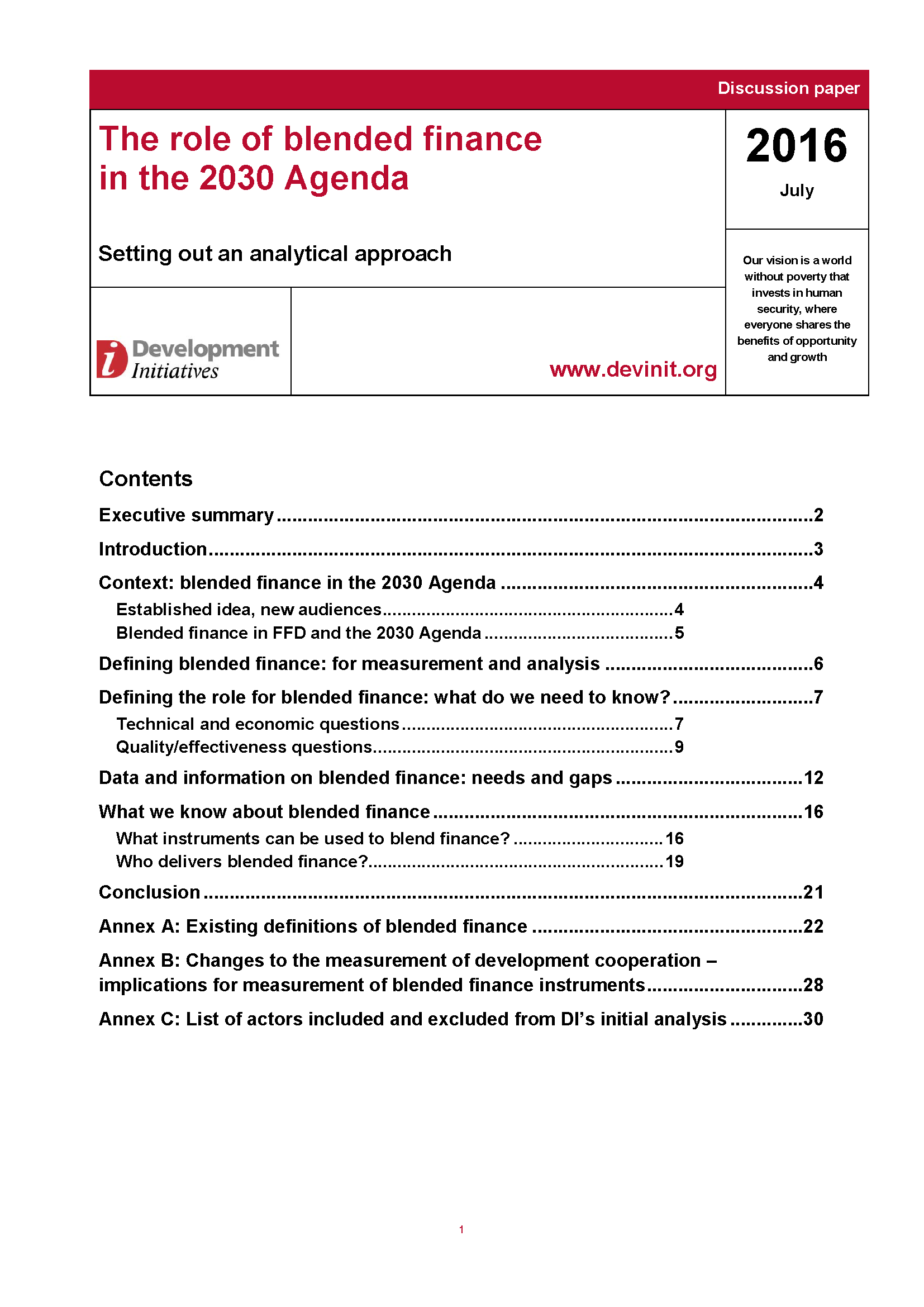 TITLE: The role of blended finance in the 2030 Agenda: setting out an analytical approach
TITLE: The role of blended finance in the 2030 Agenda: setting out an analytical approach
AUTHOR(S): Tew R, Caio C & Lonsdale C
YEAR: 2016
ABSTRACT: While ambitious Sustainable Development Goals (SDGs) have been agreed by UN member states, there is a significant financing gap for developing countries aiming to meet these goals, with the size of the gap estimated at trillions of dollars annually. This gap will not be filled by official development assistance alone as this resource currently totals around US $130 billion per annum. Many of the least developed countries will also face severe challenges in mobilising enough domestic resources to meet those financing needs, even with international support. The 2030 Agenda is, therefore, an all resources agenda.
Blended finance (in the development context) is a group of financing mechanisms that uses public sector funds (and, sometimes, philanthropic funds) to mobilise additional capital for the financing of development projects. This form of finance has received increasing attention from the international community in recent years as an 'innovative' way for traditional aid providers to mobilise investments. Although blended finance may have a potentially significant role to play in the 2030 Agenda, it is not currently possible to accurately assess its true potential, or how it should best be used to support development and poverty reduction. Informed policy dialogue and decision making related to blended finance will depend on better and more transparent information.
This discussion paper therefore sets out DI's analytical framework on blended finance and its role in financing the 2030 Agenda.